Houzz Tour: Creek Views Star in a Modern New York Home
Typically architects work for a client, be it a family, an institution or a developer. For the Creek House in upstate New York, Marica McKeel acted as architect and also as developer, having picked up some land on which to build weekend houses. This scenario meant that the client was speculative, so McKeel talked with friends and colleagues, some of whom had second homes, to generate a plan that would serve various family types and uses. As she puts it, "Any home needs to be able to accommodate various activities, from a quiet getaway for two to inviting friends up for the weekend to enjoy the open space."
A few suggestions from her inquiries were nearly unanimous: a view of the nearby creek, an immediate physical connection to the outdoors and simple interiors with an open plan. Since the focus is on the outdoors (it is a weekend house, after all), the exterior design uses natural materials to fit the site, and the interior is predominantly white, to put the trees and creek on display.
Let's take a tour of the Creek House from outside to inside, bottom to top.
Houzz at a Glance
Who lives here: This is a weekend retreat for a family from Manhattan.
Location: Ulster County, New York
Size: 2,600 square feet, 3 bedrooms, 3 bathrooms
That's interesting: Architect Marica McKeel purchased 38 acres to design and build five custom houses on; this is the first home completed.
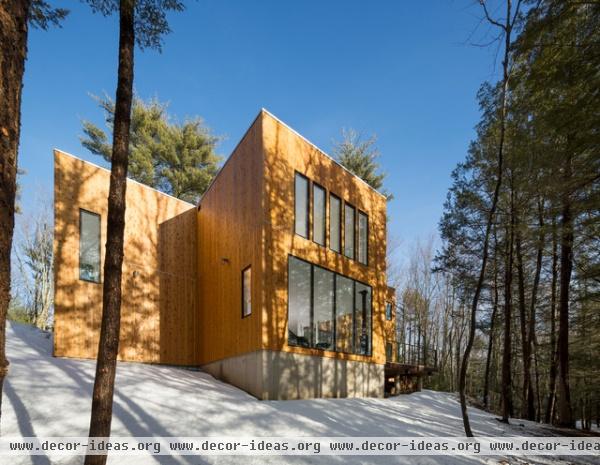
The split-level house opens up toward the south with large windows on both floors. Plenty of sunlight contributes some passive solar heating in the winter, while the trees keep the house from overheating and relying on air conditioning by blocking the high summer sun.
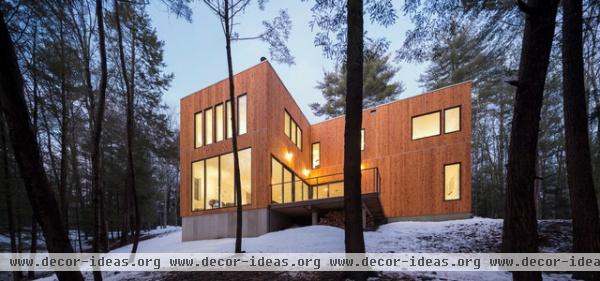
The house is T-shaped, and a deck occupies an inside corner off the living room on the lower level. The bedrooms are upstairs.
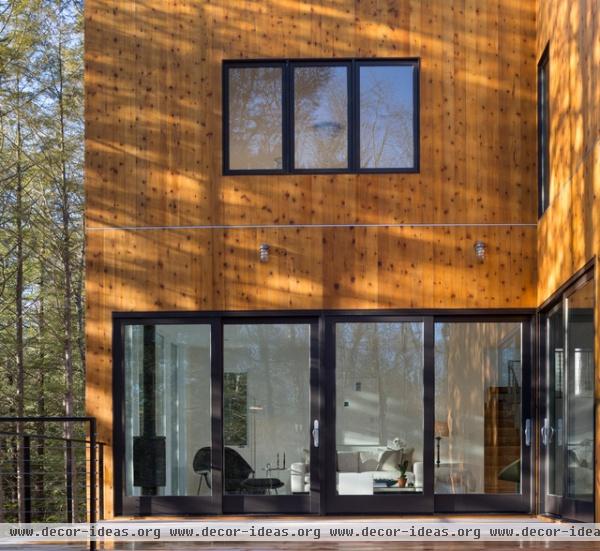
The left side of the deck is fairly high above the ground, necessitating a guardrail. The tensioned wire rails allow views from the deck and from inside. At right, toward the house, the step down to the ground is shorter, providing direct access from the deck to the rest of the property's 7 acres.
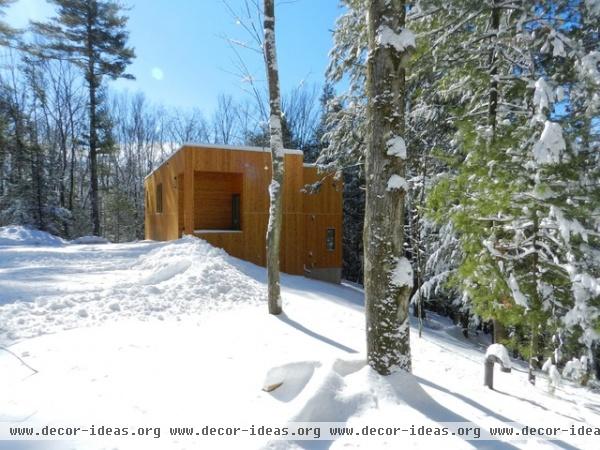
The split-level nature of the house is apparent as you approach it. In the warmer months, the house is barely visible through the trees.
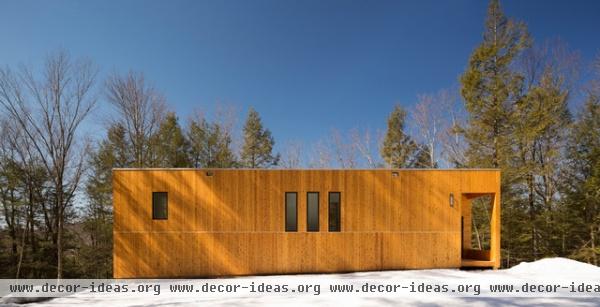
The north-facing entry elevation doesn't really hint at the openness that lies beyond. Only a few small windows — for a hallway and a bedroom — can be found here, maximizing the insulation on the cold side of the house.
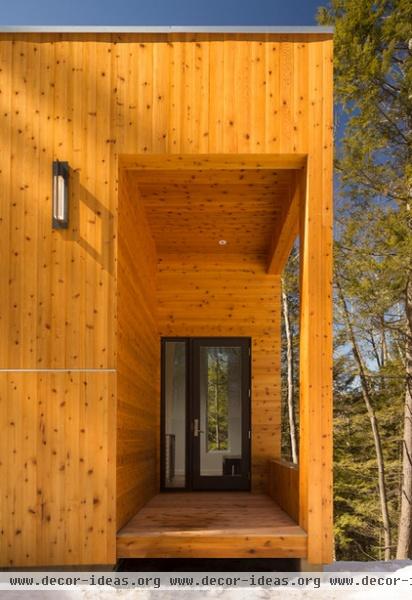
The only other opening on this side is the entry, carved into the northwest corner. The vertical tongue and groove cedar siding is treated with a transparent coating that protects against sun and rain. When the coating's five-year life span is up, the clients can continue the same treatment or leave the cedar bare, allowing it to naturally weather and turn brown and gray over time.
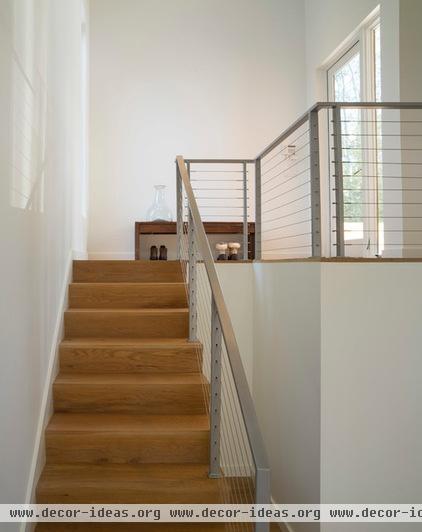
Given that the house has bedrooms above the living space, one enters on the top and either turns left to head up a few steps to the master bedroom and second bedroom, or descends the stairs to the living area and guest bedroom.
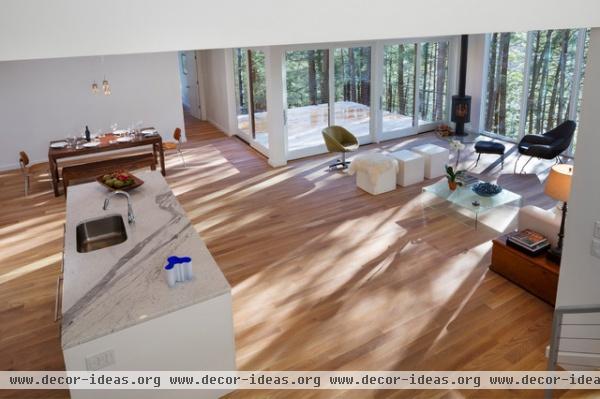
From the entry one immediately grasps the open-plan layout of the lower floor. The living area juts to the south in one leg of the "T," the kitchen and dining area back up against the solid ground to the north, and the guest bedroom lies through the hallway beyond.
Like the cedar outside, the wood flooring is treated for protection; these floors are solid oak with linseed oil. The deck's wood flooring lets it read like a literal continuation of the floor from inside to outside.
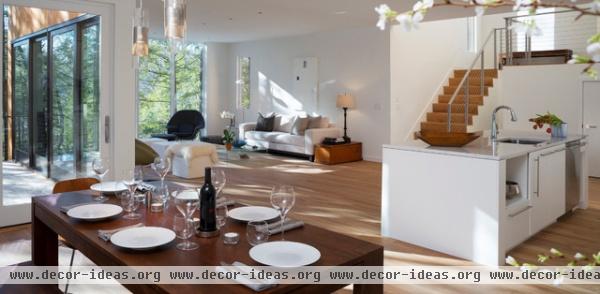
Looking from the dining table back toward the stair, we can see how important the kitchen is, especially the island. This was intentional; the architect thought of it as the main gathering space for family and guests. McKeel specified a slab of Statuarietto marble for the kitchen counters, one of the main features of the house.
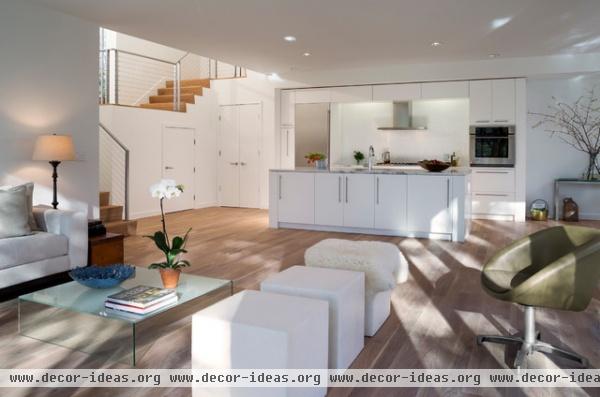
The kitchen was given more special treatment in the form of back-painted glass on the wall behind the stove and range hood. As McKeel describes it, "The reflections in the glass from the indirect lighting above and the trees from the living room windows opposite create the feeling of a window even though the kitchen is along the wall which backs up to the earth."
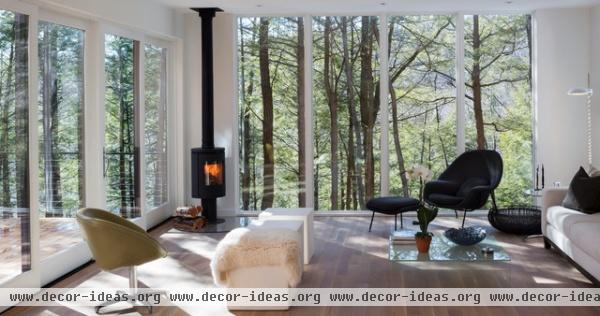
If this were my weekend house, I know exactly where I would plant myself: in the lounge chair next to the window wall and its stunning view.
The narrow widths of glass (the opening could feasibly be one or two pieces of glass) and vertical frames echo the trunks of the trees beyond.
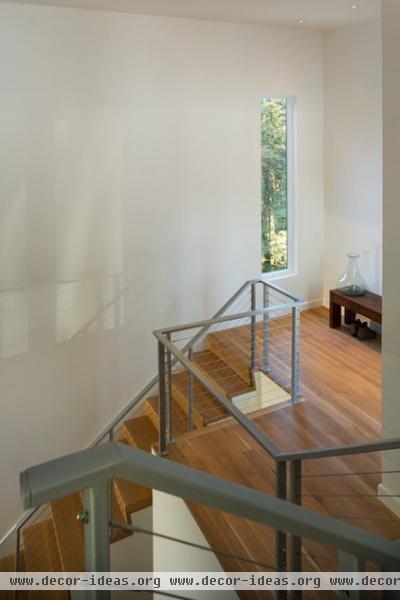
Let's head upstairs to look at the bedrooms. The entrance door is on axis with the narrow window next to the bench for taking off one's shoes.
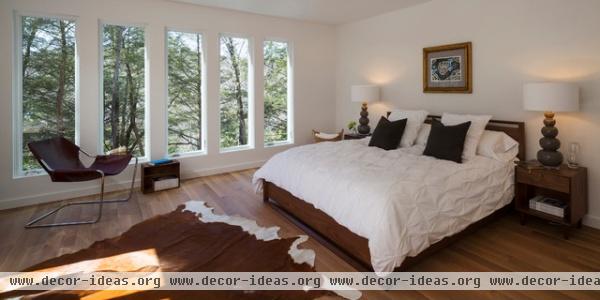
The master bedroom sits directly above the living area, the leg of the "T" that reaches toward the south. Again we see vertically oriented windows, but this time they are in separate openings rather than one large one. One reason for this may be that it will make it easier to install curtains to block out the sun when its presence isn't desirable.
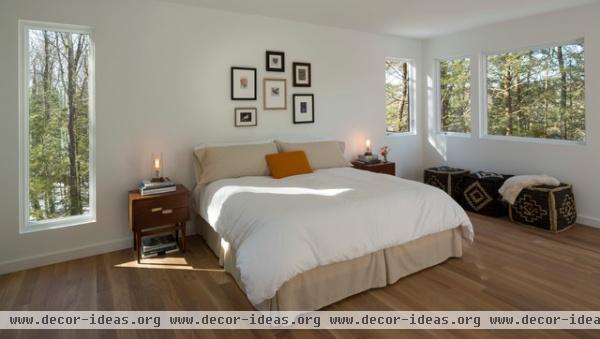
The second bedroom upstairs is on the east side of the house, and two of its windows face this direction (those flanking the bed). The wide window to the south perfectly frames the treetops when one is lying in the bed.
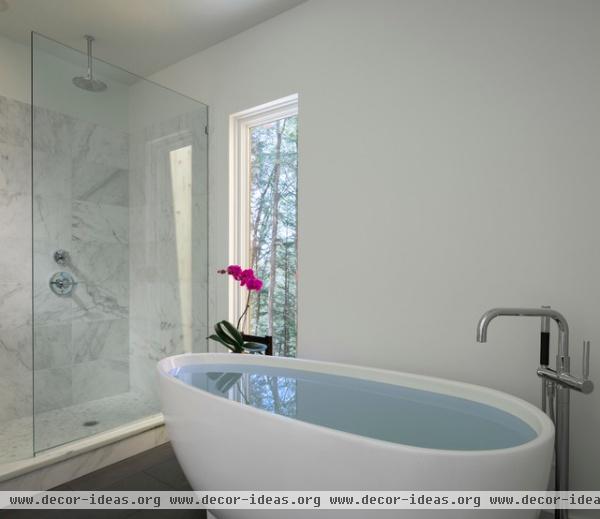
Our last look at the house is of the master bath, which consists of two vanities opposite a tub, an enclosed toilet and a shower behind a fixed glass panel. Natural light comes in through a narrow window, placed so somebody taking a shower can see outside without being seen.
More: Private Access: 12 Bathroom Windows That Reveal Only the Views












